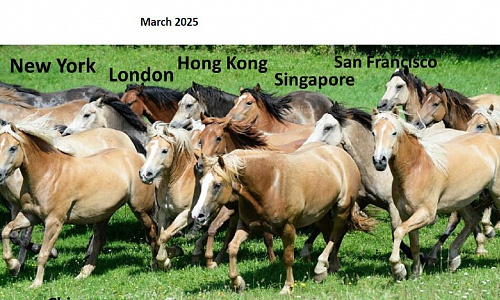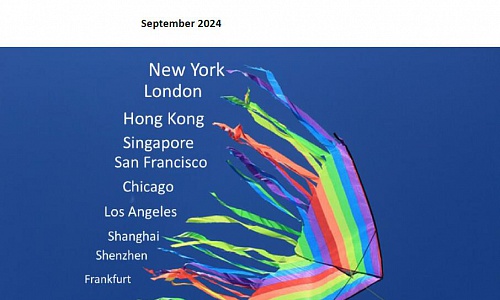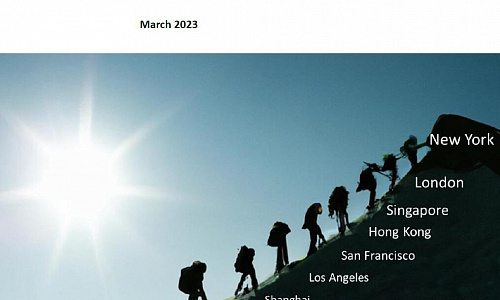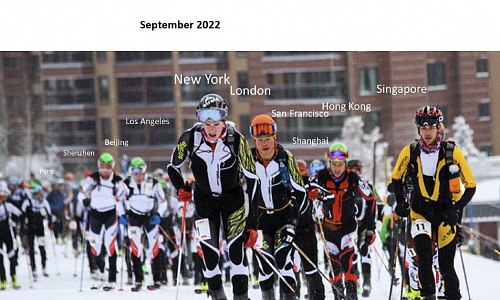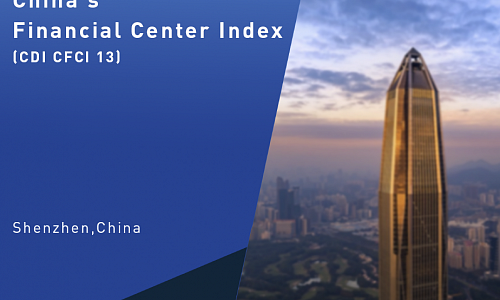
Macro Outlook
 On March 5th, Prime Minister Keqiang Li announced in an address to Congress that China was aiming for growth of about 6.5% for 2017 and CPI of about 3%. He also mentioned the government would continue to implement a proactive fiscal policy and to maintain a prudent neutral monetary policy, in particular, M2 growth rate targeting at 12% y/y for 2017.
On March 5th, Prime Minister Keqiang Li announced in an address to Congress that China was aiming for growth of about 6.5% for 2017 and CPI of about 3%. He also mentioned the government would continue to implement a proactive fiscal policy and to maintain a prudent neutral monetary policy, in particular, M2 growth rate targeting at 12% y/y for 2017.
Price inflations slowed down in January-February. CPI experienced a large fall, dragged down by falling food prices, and rose 1.7% y/y, down 0.5 pps from last Q4. Ex-factory price index of industrial products rose 7.8% y/y, PPI rose 9.9% y/y, down 1 and 1.1 pps from last December, lowering for two consecutive months. We view the CPI decrease to be transitory but producer prices will continue to grow slower than before under tightening monetary policy.
In January-February, industrial output increased 6.3% y/y, up 0.2 pps from last Q4. Fixed asset investment excluding agriculture rose 8.9% y/y, up 1.1 pps from last Q4, largely from higher producer prices. Retail sales of consumer goods rose 9.5% y/y in nominal terms in January-February, down 0.9 pps from last quarter, and rose 8.1% y/y in real terms, down 1.1 pps and 1 pps respectively from last quarter. Imports in January-February rose 26.4% y/y, up starkly 23.7 pps from last Q4. Imports from developed countries also surged, possibly reflecting Chinese consumers’ higher quality demands. Exports were stabile as usual, growing at around 4% y/y.
In February, monetary policy continued its tightening. M1 rose 21.4% y/y, and grew around 20% y/y after canceling the Spring Festival effect, 1.4 pps lower than last December. M2 rose 11.1% y/y, down 0.2 pps from last December. Market interest rate increased. For example, the interbank deposits from AAA rated banks with maturity of one year had a return of 3.01% on November 1st, 2016, but rose to 4.18% in this March, up more 1 pps. The heightened market interest rate has negative effects on corporate financing. Net financing from corporate bond grew negatively for three consecutive months.
According to National Bureau of Statistics, real estate prices in China’s major cities rose around 50% y/y in the year of 2016. Property sales by area still rose 25.1% y/y in January-February. Local governments are now taking further steps to stabilize housing market by strengthening their cities’ housing purchase restrictions. We view there might be some corrections in China’s “first tier” large cities such as Beijing, Shanghai, and Shenzhen, but prices in second tier cities, mostly key provincial capitals, may remain to be sable, while small cities and towns in vast countryside (not those towns nearby large metropolitan areas) may continue to fall slightly in 2017. Our judgment is based on China’s sound GDP growth rate and top tier cities’ superior public goods provisions.
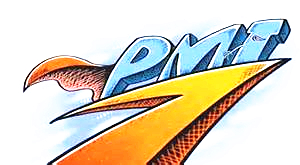 Due to Chinese New Year, many statistics are still not available, making our analytical task more difficult. But one notable policy change is that monetary policy reversed its 2016 loosening trend, and shifted into tightening. We also expect this to be the trend for 2017. M1 rose 14.5% y/y, continuing the declining trend it began in August, decreasing 1 pps per month on average, and rising 20% y/y, after correcting for the New Year’s holiday effect. M2 rose 11.3% y/y, its lowest level since last year.
Due to Chinese New Year, many statistics are still not available, making our analytical task more difficult. But one notable policy change is that monetary policy reversed its 2016 loosening trend, and shifted into tightening. We also expect this to be the trend for 2017. M1 rose 14.5% y/y, continuing the declining trend it began in August, decreasing 1 pps per month on average, and rising 20% y/y, after correcting for the New Year’s holiday effect. M2 rose 11.3% y/y, its lowest level since last year.
Loan growth has hit a new low. Chinese yuan loans from financial institutions rose 12.6% y/y, down 2.7 pps from last January, and their lowest growth rate since June 2005. Deposits from non-financial enterprises rose 11% y/y, showing a deleveraging trend since November. Imports jumped 16.7% y/y, and were up 14 pps from Q4 2016 in January, Exports improved less, rising 7.9% y/y.
CPI rose 2.5% y/y in January or 2.3% y/y after correcting for the New Year’s effect, slightly higher than last month. Producer prices continued rising. PPI rose a rapid 6.9% y/y, and 0.8% m/m, up 1.4 pps from last December. We expect PPI to match its last peak of 7.5% y/y, seen in July 2011.
The CEEM-PMI (an abbreviation for the China External Environment Monitor PMI), an external PMI indicator recently developed by the China Academy of Social Sciences, measures China’s external economic environment. It recently rose to 53.6, above the 50 threshold, mostly in line with, but better than, the two general PMI indices, NBS PMI and HSBC PMI, which were at 51.3 and 51 respectively. While the latter two figures indicate a general economic recovery for China, the CEEM-PMI signals possible improvement of external demand. The jump of the CEEM-PMI may be mainly driven by developed markets. For example, the new high value of U.S. PMI at 56 may be interpreted as a rebound from the previous overreaction to Trump-driven trade uncertainties.
 GDP in 2016 rose 6.7% y/y, down 0.2 pps from 2015, reaching the lowest yearly level in China. The quarterly growth was highly stable, with first three quarters rising 6.7% and the fourth quarter rising 6.8%. In 2016, fixed asset investment rose 8.1%, down 1.9 pps from 2015. From the growth trend, it rose fastest in Q1, and grew 10.7% y/y, higher than Q3 and Q4 in 2015. The other three quarters displayed slower growth rates.
GDP in 2016 rose 6.7% y/y, down 0.2 pps from 2015, reaching the lowest yearly level in China. The quarterly growth was highly stable, with first three quarters rising 6.7% and the fourth quarter rising 6.8%. In 2016, fixed asset investment rose 8.1%, down 1.9 pps from 2015. From the growth trend, it rose fastest in Q1, and grew 10.7% y/y, higher than Q3 and Q4 in 2015. The other three quarters displayed slower growth rates.
Ended on December 16, 2016, the most important meeting, the central economic workshop meeting, held by Chinese top leaders including the President and Prime Minister, states that the policies for 2017 will lean towards fiscal policy rather than monetary policy which has been loosened but effect was small. The meeting also states that housing is for living, not for speculation. We expect the housing market will cool down further and more cities will start to adopt real estate tax to beat speculation.
There was divergence between imports and exports in 2016. Total exports fell -7.7% y/y, down 4.9 pps from 2015. Instead, total imports fell -5.5% y/y, up 8.6 pps from 2015.
Producer prices have been recovering. Ex-factory price of industrial goods first turned positive growth from September in 2016, and quickly expanded to 5.5% y/y growth rate in December. PPI turned positive from October and rose 6.3% y/y eventually in December. We expect the rising producer prices will translate to higher CPI in 2017. Before July, M1 growth rate steadily increased, reaching growth rate of 25.4% y/y at its peak, but after that, M1 growth rate lowered continuously, and grew 21.4% y/y in December, and the m/m growth rate was negative after considering seasonal factors. We expect monetary policy will be neutral in 2017.
On January 27, 2017, the US newly elected president Donald J Trump stated to consider a 20% tariff on Mexican exports to US. Trump has been an advocate for trade protection during his campaign. China is definitely on the list of potential tariff increase or to be labeled as currency manipulator. However, we expect US will lose more from a potential US-China trade war. Chinese economy is more flexible and can substitute jobs with its large fiscal capability considering China’s low national debt. China also mainly plays the role of processing trade which means the negative impact will transfer to other economies. The financial market will react instantly to any trade friction and self-fulling amid the two largest economies’ conflict, which will eventually lead to resort to US dollar safe haven. A large appreciation of US dollar will hurt the US economy more.
 The economic working meeting of the Communist Party Central Committee, chaired by President Xi Jinping, has set next year’s main economic goal: stability and progress. The meeting, which ended on December 16th, was the most important political-economic session of yearend. We view progress not in terms of the growth rate, but as focused on structural transformation, and aimed at a more balanced economy.
The economic working meeting of the Communist Party Central Committee, chaired by President Xi Jinping, has set next year’s main economic goal: stability and progress. The meeting, which ended on December 16th, was the most important political-economic session of yearend. We view progress not in terms of the growth rate, but as focused on structural transformation, and aimed at a more balanced economy.
Fixed asset investment rose 8.3% y/y in real terms in November, up slightly after canceling for incomparable factors. For various industries, a key change is that industrial investment is picking up, rising 7.1% y/y in November, up 5.3 pps from Q3. Industrial output rose 6.2% y/y, up 0.1 from October, still in the stabilizing zone since April. State and state-controlled companies are diverging with private companies, by enjoying strong growth, up 7.5% y/y in October.
Retail sales of consumer goods in November recovered, rising 10.8% y/y in nominal terms. Both exports and imports jumped. Exports in dollar terms rose 0.1% y/y, up 6.4 pps from Q3. Imports rose 6.7% y/y, up 11.4 pps from Q3. Since trade is often volatile, this one-month jump cannot be interpreted as a rebounding trend.
Producer prices also rose significantly in November. The ex-factory price index of industrial output grew 1.5% m/m, and was up 3.3% y/y. PPI grew 1.8% m/m, and 3.5% y/y. CPI rose 2.3% y/y, continuously rising for several months. We expect rising producer prices to translate into higher inflation. The M1 money supply was up 22.7% y/y; its growth rate has been falling for four consecutive months, and is down 2.7 pps from July.
U.S. President-elect Donald Trump stated that, after taking office, he would list China as a currency manipulator. According to the three standards set by the U.S. Treasury department, China only meets one of these conditions, so China is very unlikely to be listed as a manipulator. But, given the large trade imbalance between the two countries, China needs to do more, such as to address the ongoing structural transformation, in addition to its currency actions, to balance its trade relations with the United States.
 Key economic indicators are signaling positive changes. Fixed asset investment was up 8.1% y/y in August, and up 4.2 pps from July, recovering to Q2 levels, and halting its declining trend. Industrial output was up 6.3% y/y, and up 0.3 pps from July. Retail sales of social consumption goods were up 10.6% y/y in nominal terms, and up 0.4 pps from July. We attribute these positive signs to this year’s supply-side reforms, capacity cuts and deleveraging.
Key economic indicators are signaling positive changes. Fixed asset investment was up 8.1% y/y in August, and up 4.2 pps from July, recovering to Q2 levels, and halting its declining trend. Industrial output was up 6.3% y/y, and up 0.3 pps from July. Retail sales of social consumption goods were up 10.6% y/y in nominal terms, and up 0.4 pps from July. We attribute these positive signs to this year’s supply-side reforms, capacity cuts and deleveraging.
Exports fell -2.8% y/y, up 1.7 pps from Q2. Imports grew 1.5% y/y, shifting from negative into positive territory. The recovery trend for imports is firmer, and more certain.
CPI has been low for four months. In August, CPI was up 1.3% y/y, down 0.5 pps from July. We expect CPI growth to rebound, to around 1.5% y/y. Producer prices continue to recover, with negative numbers improving, rising closer to the zero line. The ex-factory price index of industrial products fell -0.8% y/y, and PPI fell -1.7% y/y, both up 0.9 pps.
Most financial indicators maintained their previous diverging trends. M1 grew 25.3% y/y, up 16 pps from August 2015. M2 rose 11.4% y/y, up 1.2 pps from July. Total loans from financial institutions were up 13% y/y – a declining trend, down 2.4 pps from August 2015.
Profits of China's major industrial firms rose 6.9% y/y in the first seven months of 2016, accelerating from H1’s 6.2% rise, according to the latest data released by the National Bureau of Statistics of China. Private firms in particular showed strong profit growth. We view this surprising profit increase, and other positive signals, as a consequence of cutting capacity and deleveraging. Those actions leave more room for the growth of private firms, since zombie firms (most of which are stated-owned) were taking up more resources, such as bank loans. We expect this supply-side reform to continue, and to generate more sustainable economic growth for China.
 The IMF in June raised its 2016 growth outlook for China to 6.6%, a 0.1 pp uptick from its April projection, even though Brexit prompted the Fund to slice its global growth forecast for 2016 by 0.1 pp, to 3.1%.
The IMF in June raised its 2016 growth outlook for China to 6.6%, a 0.1 pp uptick from its April projection, even though Brexit prompted the Fund to slice its global growth forecast for 2016 by 0.1 pp, to 3.1%.
The growth upgrade for China shows that the IMF is optimistic about the major reforms underway in China. The Fund’s outlook is consistent with our forecast, as China still has plenty of room to lift its fixed asset investment and current structural reforms, including by deleveraging and cutting excessive capacity, which should generate sustainable growth. Other common media concerns, such as the increase in non-performing loans, the increase of government and household debt and yuan instability, are all mentioned. The Fund also notes that the Chinese government is fully aware of the problems, and is taking action to deal with them.
The bad news is that Chinese fixed asset investment was up just 3.9% y/y in real terms in July, down a significant 4.3 pps from Q2. We expect state investment to increase to counteract this declining trend, and to address the slowdown in private investment, since state investment complements private sector investment.
Industrial output was up 6% y/y, in a slight slowdown from Q2. Production and sales of automobile surged in Q2, by about 17%. Retail sales of consumer goods rose 10.2% y/y in nominal terms in July, flat on Q2. Exports fell -4.4% y/y, while imports fell -12.5% y/y, down 5.7 pps.
CPI rose 1.8% y/y, down for three consecutive months, and down 0.5 pps from April. Producer prices continue to recover. The ex-factory price index of industrial products fell -1.7% y/y, and PPI fell -2.6% y/y, down 0.9 and 0.8 pps from June.
Financial and monetary indicators showed divergent trends in July. M1 increased 25.4% y/y, up 0.8 pps from June, and up a significant 18.8 pps from July 2015. But other financial indicators failed to perform well. M2 rose 10.2% y/y, down 1.6 pps from June, and down 3.1 pps from 2015. Loans from financial institutions rose 12.9% y/y, down 1.4 pps from June, to their lowest level since 2006. The main reason behind this divergence is the inconsistency of monetary policy.
 GDP grew 6.7% y/y in Q2, the same rate as in Q1. There’s downward pressure on future growth, though we also expect growth to stabilize. Industrial output was up 6.1% y/y. Though growth was 0.3 pps faster than in Q1, the recovery is weak.
GDP grew 6.7% y/y in Q2, the same rate as in Q1. There’s downward pressure on future growth, though we also expect growth to stabilize. Industrial output was up 6.1% y/y. Though growth was 0.3 pps faster than in Q1, the recovery is weak.
Fixed asset investment rose 8.2% y/y in real terms, down 2.5 pps from Q1, and at the end of June was up only 7.4% y/y. In particular, private investment was up just 1.4% y/y, down 4.3 pps from Q1, and even shrank -0.1% y/y in June.
Retail sales of consumer goods were up 10.6% y/y in June in nominal terms, and up 0.6 pps from May. In Q2, imports fell -6.8% y/y, up 6.7 pps from Q1. After taking out seasonal factors, imports have been recovering since March. Import recovery is not due to stronger demand, but to firms’ substitution of overseas goods, considering the increase of domestic producer goods’ prices due to continuing supply-side reform. Exports were down -4.6% y/y and, although up 5.1 pps from Q1, still face the risk of another dip.
CPI was up 1.8% y/y in June, decreasing for two consecutive months, down 0.4 pps from April. The declines are more related to seasonal factors, though. Producer prices are still in a recovery cycle. The ex-factory price index of industrial products in June fell -2.6% y/y, up 0.2 pps from May. PPI rose 0.2% m/m, and fell -3.4% y/y, trending up as well.
M1 and deposits from non-financial enterprises rose 24.6% y/y and 32.5% y/y in June, respectively, up 20.3 pps and 30.5 pps from June 2015. Such large increases amid a weak economy demonstrates the diminishing effect of monetary policy on the real economy. Supply-side reforms to eliminate excessive capacity leaves firms reluctant to invest, easy credit notwithstanding.
The results of the June 23rd Brexit referendum triggered a series of financial and economic consequences, such as the drop of pound sterling. If the UK leaves the EU, that would certainly diturb British trade with China, though it also creates an opportunity for China’s heated overseas enterprise expansion into the rest of the world. Pound depreciation will on the one hand put depreciation pressure on the yuan, considering the major roles of both in the currency basket, to which the yuan is pegging. On the other hand, the close relation between the United States and Europe will reduce the likelihood of the Fed hiking interest rates, given such high counterparty uncertainty. And that will reduce the prospects for yuan depreciation.
 Fixed asset investment growth slowed significantly in April, rising by 10.1% y/y, down 0.6 pps from Q1. Value added for major industrial firms was likewise weak, at 6% y/y, down 0.6 pps from March -- and a break from the previous recovery. We expect private investment to pick up after industrial output shows clear signs of rebound – rising above 10% y/y, for example. More actions need to be taken to boost growth, and the Chinese government is advocating structural reforms, by encouraging more innovation. But we hope China does not deviate too much from its old path of investment.
Fixed asset investment growth slowed significantly in April, rising by 10.1% y/y, down 0.6 pps from Q1. Value added for major industrial firms was likewise weak, at 6% y/y, down 0.6 pps from March -- and a break from the previous recovery. We expect private investment to pick up after industrial output shows clear signs of rebound – rising above 10% y/y, for example. More actions need to be taken to boost growth, and the Chinese government is advocating structural reforms, by encouraging more innovation. But we hope China does not deviate too much from its old path of investment.
Retail sales of social consumption goods were up 10.1% y/y in nominal terms, down 0.2 pps from Q1. Exports in dollar terms fell -1.8% y/y, up 7.8 pps from Q1. Imports fell -10.9% y/y, 2.6 pps more than in Q1. Both indicators are still in the negative zone, though narrowing to the zero line. We do not expect trade to improve in the short term.
Prices are stabilizing, with CPI up 2.3% y/y in April, flat on March. In April, the ex-factory price index rose 0.7% m/m and fell -3.4% y/y. PPI rose 0.6% m/m and fell -4.4% y/y. The two indices’ y/y decreasing magnitudes fell by 0.9 and 0.8 pps, respectively.
M1 rose 22.9% y/y, up 0.8 pps from March, showing accelerated growth. But other major financial indicators are all declining. The broad money supply, M2, was up 12.8% y/y, down 0.6 pps from March. In April, total societal financing plunged by -28.9% y/y.
The People’s Bank of China made special announcements in response to the decline of financial indicators, emphasizing irregular factors underlying the drops. The Bank stressed that the general direction of monetary policy hasn’t, and wouldn’t, change.
China’s tax system underwent a major shift on May 1st, when the VAT system was extended to all sectors of the economy. Previously, firms paid tax based on their revenue; they’ll now enjoy a large tax reduction. We estimate that business taxes will fall by over RMB 300 billion. But the VAT reform will also generate enormous growth opportunities, especially for mid-sized firms that are mostly private, and will generate more jobs. The government budget won’t suffer, as VAT reform will attract more firms into business, and raise the output of existing firms – which will all increase government revenue.
 GDP rose 6.7% y/y in Q1. Although that is still slower than in Q4 2015, improved main indicators for growthbolster our confidence in future growth.
GDP rose 6.7% y/y in Q1. Although that is still slower than in Q4 2015, improved main indicators for growthbolster our confidence in future growth.
Industrial output rose 6.8% y/y in March, up 0.7 pps from the previousquarter. Fixed asset investment excluding agriculture rose 10.7% y/y in Q1, up 1.4 pps from Q4, and 11.1% y/y,with growth especially strong in March. In Q1, the real estate market heated up, and sales were up 33.1% y/y.
Retail sales of social consumption goods rose10.3% y/y in Q1 in nominal terms, up 0.1 pps from the previous quarter, and rose 10.5% y/y in March.
Exports in dollar terms fell -9.6% y/y in Q1, down 4.6 pps from Q4 2015. Imports fell -13.5% y/y, down 1.7 pps. However the monthly growth of exports in March was 18.7%, indicating a good possibility of further improvement.
In March, CPI rose 2.3% y/y, flat on February. One notable change was in industrial prices, which had been negative and falling for four years, but which turned upwards in March. The ex-factory price index rose 0.5% m/m, and PPI rose 0.3% m/m.
At the end of March, M1 rose 22.1% y/y, up a significant 6.9 pps from the end of 2015, and accelerating. M2 rose 13.4% y/y, which was quite stable. Savings deposits from non-financial enterprises rose 19.4% y/y, up 5.7 pps from the end of 2015 -- a major increase.
 Prime Minister Li Keqiang announced in an address to Congress on March 5th that the economic growth target would be 6.5%-7% for 2016 - the first time a GDP growth target was set for a particular time frame. Industrial output rose 5.4% y/y, a new low in the current cycle of decline. Fixed asset investment shows positive signs, and was up 10.2% y/y, up 0.9 pps from Q4 2015. State investment has increased, in order to lift growth. For example, planned total investment for new projects increased 41.1% y/y in January-February, giving us confidence in future growth.
Prime Minister Li Keqiang announced in an address to Congress on March 5th that the economic growth target would be 6.5%-7% for 2016 - the first time a GDP growth target was set for a particular time frame. Industrial output rose 5.4% y/y, a new low in the current cycle of decline. Fixed asset investment shows positive signs, and was up 10.2% y/y, up 0.9 pps from Q4 2015. State investment has increased, in order to lift growth. For example, planned total investment for new projects increased 41.1% y/y in January-February, giving us confidence in future growth.
Retail sales of consumer goods rose 10.2% y/y in nominal terms, down 0.9 pps from Q4. In February, CPI rose 2.3% y/y, up 0.7 pps from December. The ex-factory price index of industrial products fell -4.9% y/y, and PPI fell -6.5% y/y, finally narrowing the gap to zero, partly due to supply-side reform.
Trade fell further. Exports decreased -17.8% y/y in January-February, and are probably down around -10% y/y, after adjusting for last year’s large base number. Imports fell -16.7% y/y.
M1 was up 17.4% y/y at the end of February, up 1 pps from January, after factoring in the Chinese New Year effect. This shows that monetary policy is still loosening. Total loan size and societal financing scale have returned to normal levels.
Shenzhen, Beijing and Shanghai were in the headlines, as housing prices in first-tier cities have surged. Of particular note, housing prices in Shenzhen have risen more than 50% over the past year. Moreover, the real estate market recovered nationally. All this is contrary to the oft-heard pessimistic forecast in recent years, and is consistent with our previous forecasts.
Buyers’ strong expectations are based on their 10% per year increasing income. China still has probably the world’s strictest housing purchase entry regulations. The housing price surge is not surprising any more, viewed in light of the biggest rural-to-urban migration in human history, and the migration between cities (big cities are seen as more attractive, because of better public resources and job prospects). We do not rule out the risks of empty towns, but these mainly exist around a very limited number of small cities, and their systemic risk is quite low. We are still confident about China’s housing market, as long as the Chinese economy is growing at a moderate rate.

